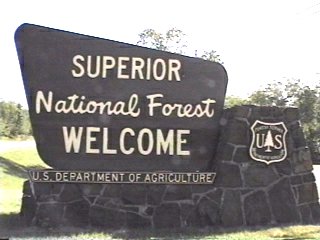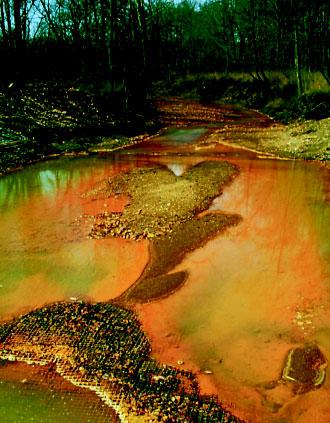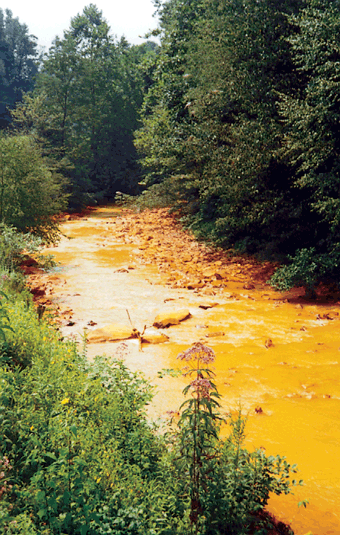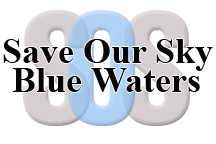Take Action - Reject the Damaging Boundary Waters - School Trust Land Exchange!

According to Rep. David Dill, D-Crane Lake, found HERE
"...we should mine, log, and lease the hell out of that land that we get in the change."
Take Action on the Toxic Boundary Waters Land Swap
Tell the US Forest Service to Reject the Damaging Boundary Waters-School Trust Land Exchange, and Protect the Integrity of the Superior National Forest!
Minnesota — The U.S. Forest Service is currently taking public comment on the School Trust Land Exchange Draft EIS. Public comments should focus on any interests or concerns a commenter has about the project.
The School Trust Land Exchange would trade federal Superior National Forest lands located outside the Boundary Waters Canoe Area Wilderness (BWCAW) for Minnesota School Trust land located inside the BWCAW.

Land Swap a Bad Deal for Children, a Good Deal for Mining and Logging
- Stop the giveaway of the Superior National Forest being proposed in the name of our school children -
Toxic copper-nickel sulfide mining is once again threatening Superior National Forest. The U. S. Forest Service (USFS) comment period on its School Trust Land Exchange draft Environmental Impact Statement (DEIS,) ends on October 10, 2017. The USFS, already planning a land exchange with PolyMet for its proposed toxic open pit sulfide mine, is now preparing to trade Superior National Forest acreage that would facilitate more such mining. This time it's being done in the name of our school children.
The proposed exchange of approximately 23,000 - 39,000 acres, as included in the DEIS, would give the state its most coveted parcels of Superior National Forest land--those needed by Teck and other companies for future mines or mine infrastructure. As summarized in 2012 by then state Representative David Dill, "We should mine, log, and lease the hell out of that land that we get in the [ex]change."
Severed Mineral Rights and Split Estates Are Not Being Addressed
Meanwhile, 2/3 of the trust lands, along with all of the state’s mineral rights, would remain in the BWCAW, leaving the door open for future exchanges and controversies, resulting in a continued loss of Superior National Forest lands located in the headwaters of the Rainy and St. Louis Rivers. The USFS, under the Week's Act, has the responsibility of protecting such headwaters. Turning the land over to the state removes such protections against destroying the surface. Instead it allows mining companies to proceed with plans for destructive open-pit sulfide mining, bypassing Federal environmental protections in favor of corporate interests. Nowhere is there any mention of the health and well-being of our school children.
There is no environmental analysis of the effects of mining in the DEIS, even though Federal lands were chosen by the state for their high mineral potential. No specific deposits are named on the DEIS maps, even though there are multiple known metallic mineral deposit areas included among the parcels. The DEIS arbitrarily claims that no mining is foreseeable, ignoring extensive leasing, exploration, mapping, and delineation of mineral deposits.
Nowhere does the DEIS consider the environmental and cumulative impacts of more intense mining, logging, and development on the water, wetlands, wildlife and forest resources in what is now Superior National Forest.
The DEIS ignores the fact that most of the Superior National Forest lands outside of the BWCAW being negotiated for exchange have severed mineral rights owned by private mining interests, and therefore would not generate money for the school trust. The main intent of the proposed land exchange is to facilitate the opening of a sulfide mining district on lands bordering the BWCAW and extending through what is now Superior National Forest to Lake Superior.
The School Trust Land Exchange project constitutes a “connected action” under NEPA to future mining projects on the Superior National Forest. The proposed land exchange is part of a connected action involving numerous mining projects across the Superior, and the impacts from mining must be included in the environmental review of the School Trust Lands Exchange.
Removing lands from Federal to state administration would result in the loss of important protections, including the Weeks Act and other Acts prohibiting open pit mining, Endangered Species Act provisions, and the National Environmental Policy Act (NEPA) review and appeal process. The underlying purpose of the exchange is to remove federal protections on Superior National Forest lands that have a variety of critical protections, including prohibitions against mines such as PolyMet’s open pit sulfide mine. This exchange would mainly benefit multinational mining companies by removing Federal protections, environmental review, and oversight.
In short, all aspects of the exchange favor mining, logging and development interests and keep the public in the dark about the real impacts.
Other Options for the Trust
When the BWCAW was established in 1978, the retention of state trust lands allowed for the sharing of state and Federal management. Since 10% of BWCAW campsites are on trust lands, it would be appropriate for the USFS to share a portion of camper fees with the state.
In 1997 the entire Minnesota Federal legislative delegation supported a Federal buy-out of the trust lands, and funds were available at the time. But the Iron Range delegation torpedoed the plan, demanding a complete land exchange instead. The result was a loss of funds for our school children over the past 20 years.
Ask the USFS to choose Alternative 1 - the No Action Alternative. Reject the land exchange and protect the integrity of Superior National Forest.

Image: Snow goose that died after landing on the toxic Berkeley Mine Pit in Montana. Toxic sulfide mining open pits may be in Minnesota’s future. Rich Marvin / Montana Bureau of Mines and Geology
Protect the Arrowhead, Stop the Toxic Trade
Comments must be submitted by October 10, 2017.
The Draft EIS may be found under Project Documents in the 'Analysis' tab: https://www.fs.usda.gov/project/?project=45943
Draft Environmental Impact Statement School Trust Land Exchange (DEIS) found HERE
For more information see our EIS scoping page: http://www.sosbluewaters.org/Boundary_Waters_Land_Exchange.html
( http://www.sosbluewaters.org/100495_FSPLT3_4047217.pdf )
Comments may be submitted by the following methods.
Please include in the subject line “Comment on School Trust Land Exchange Draft EIS.”
Email to:comments-eastern-superior@fs.fed.us
Fax to: 218-626-4398
Send comments by post or hand delivery to:
Re: School Trust Land Exchange
Superior National Forest Headquarters
8901 Grand Avenue Place,
Duluth, MN 55808
Send comments by October 10, 2017 to: comments-eastern-superior@fs.fed.us
Please include in the subject line “Comment on School Trust Land Exchange Draft EIS”
The USFS should choose Alternative 1 - the No Action Alternative.
Suggested comments below:
Connie Cummins, Forest Supervisor
Superior National Forest Headquarters
8901 Grand Avenue Place
Duluth, MN 55808
To: comments-eastern-superior@fs.fed.us
Subject: Comment on School Trust Land Exchange Draft EIS
Dear Forest Supervisor Cummins:
I am writing in opposition to the School Trust Land exchange as it would be harmful to the BOUNDARY WATERS, SUPERIOR NATIONAL FOREST and LAKE SUPERIOR.
The main purpose of the exchange is to remove federal protections on Superior National Forest lands that have a variety of critical protections.
The land exchange is not in the public interest of the citizens of Minnesota and the Nation:
• It facilitates controversial toxic sulfide mining in the Superior National Forest.
• The School Trust Land Exchange project constitutes a “connected action” under NEPA to future mining projects on the Superior National Forest and the impacts from mining must be included in the environmental review of the School Trust Lands Exchange.
• It would harm the Arrowhead's iconic wildlife, including the endangered Canada lynx, gray wolf, northern long-eared bat, and imperiled moose.
• It would open the doorway to intensive logging, including bio-mass proposals.
• It allows for the expansion of taconite mining operations which include waste rock disposal and tailings basin expansion with ensuing pollution.
• It removes Weeks Act watershed protections, and enables further land exchanges to occur on remaining acres and/or over mineral rights. Ecological and watershed concerns are omitted from the DEIS.
• The DEIS fails to acknowledge the difference between state and federal management of natural resources. This is particularly true in the case of mining, where the USFS doesn’t allow open-pit mining on Superior National Forest lands (i.e. PolyMet).
• Such a land exchange removes the right to citizen input, environmental review and appeal.
• The land exchange lacks Tribal consultation and ignores Native American hunting, fishing and gathering rights.
• When the BWCAW was established in 1978, the retention of state trust lands allowed for the sharing of state and Federal management. Since 10% of BWCAW campsites are on trust lands, it would be appropriate for the USFS to share a portion of camper fees with the state.
• No mention is made in the DEIS of the elimination of recreational opportunities due to changes in land ownership.
• An exchange of 20,000 - 30,000 acres leaves potential contentious negotiations regarding the remaining lands and mineral rights.
• The DEIS ignores the health impacts that result from mining activity. Sulfide mining is known to leach toxic heavy metals, including copper, nickel, cobalt, zinc, cadmium, manganese, arsenic, and mercury.
The USFS should reject the damaging Boundary Waters - School Trust Land exchange. In short, all aspects of the exchange favor mining, logging and development interests and keep the public in the dark about the real impacts.
The USFS should choose Alternative 1 - the No Action Alternative.
Reject the land exchange and protect the integrity of the Superior National Forest.
Your name and address here

Moose - Superior National Forest (USFS)
School Trust Lands in the Boundary Waters
FEDERAL PURCHASE OF ALL SCHOOL LANDS IN THE BWCAW / BWCAW USER FEE
Desired Outcome: The Federal government’s purchase of the State's school lands in the Boundary Waters. Alternatively, the school trust could collect a percent of the BWCAW user fee currently charged to wilderness visitors by the U.S. Forest Service. With the BWCAW user fee scenario, the State would continue to own the land in the Boundary Waters and would continue to have a voice in management decisions. The sale-only and BWCAW User Fee options protect the Superior National Forest (including the Boundary Waters) and is financially responsible to the original school land agreement by raising guaranteed revenue for the Permanent School Fund (PSF). Funds for a sale would most likely be secured through a cash payment from the Federal government from dedicated funds such as the Land and Water Conservation Fund.
HOW DOES DESTROYING THE LAND AND POLLUTING THE WATER BENEFIT OUR CHILDREN?
What we need is a common sense state plan for funding public education without destroying the value of our land and poisoning the water for the children of the future. If public education is one of the main priorities of our government, then education money should come from the general fund. It is unethical and immoral to base the education of one generation of children upon the destruction of land for the next generation of children. Once land has been mined, it has no future value. Instead it pollutes our air and water, especially affecting the development of our children at the most vulnerable stages of their lives.
Minnesota Arrowhead Region - Duluth Mineral Complex (MDNR)
MDNR: Exploration for Metallic Mineral Resources in Minnesota: Copper, Nickel, and Platinum Group Metals
Mineral Lands for Mining in the Superior National Forest
The proposed exchange would give specific Superior National Forest lands to the state, for mining purposes:
Teck Resources (Teck American) - Mesaba deposit surrounding area
Encampment – Serpentine deposit
Encampment – near Sand Lake and McDougal Lake
Prime Meridian – Wet Legs deposit
Franconia - near Dunka deposit
DMC (USA) LLC – near Mesaba deposit (Twin Metals Minnesota)
DMC (USA) LLC - near Wampus Lake (Twin Metals Minnesota)
Background Information and Media on the Boundary Waters - School Trust Land Exchange
MPR - BWCA land swap environmental review released found HERE
Duluth Reader Weekly - Boundary Waters School Trust Land Exchange: A Toxic Trade on the Horizon found HERE
Minneapolis Star Tribune Editorial: Scrutiny needed on BWCA swap - Boundary Waters land deal would mostly benefit industry found HERE
Duluth News Tribune - Cravaack introduces BWCAW land swap bill By John Myers found HERE
Duluth News Tribune Editorial - Save Our Sky Blue Waters found HERE
Duluth Reader Weekly - Bad Deal for the Children, Good Deal for the Mining Companies article found HERE
Subcommittee on National Parks, Forests and Public Lands Legislative Hearing on H.R. 5544 - Comments Submitted Re: H.R.5544 THE MINNESOTA EDUCATION INVESTMENT AND EMPLOYMENT ACT, Friday, June 8, 2012 found HERE
Comments Bad Deal for the Children, Good Deal for the Mining Companies found HERE
Save Our Sky Blue Waters (SOS) & Save Lake Superior Association (SLSA) & Friends of the Cloquet Valley State Forest (FCVSF) Position Statement on Minnesota School Trust Lands in the BWCAW found HERE
Sierra Club North Star Chapter - Cravaack opposition letter found HERE
Quetico Superior Foundation - Cravaack to Introduce Land Exchange Bill found HERE
Western Lands Project - Update - Minnesota: Land Trade Bill Would Foster Open-Pit Mining found HERE
More Info on School Trust Lands Within the BWCAW
MinnPost - Exchanging school trust lands isn't 'for the sake of our children' By Elanne Palcich found HERE
MinnPost - Would better DNR management bring more money for schools? By Beth Hawkins found HERE
Minneapolis Star Tribune - Minn., feds close on deal for state land in BWCA found HERE
Op-ed FOR THE SAKE OF OUR CHILDREN: THE SCHOOL TRUST ISSUE By Elanne Palcich found HERE
Minnesota Public Radio (MPR) - Disagreement threatens to derail plan to swap school trust lands found HERE
Toxic Mining For Our Children?

Highland Valley #8, Teck Cominco, open pit copper mine, Logan Lake, British Columbia, Canada, 2008 / By Edward Burtynsky
From the Guardian, Edward Burtynsky's corrupted landscapes – in pictures
Edward Burtynsky: ‘We’ve reached peak everything’
Toxic Sulfide Mining District planned for Minnesota's Arrowhead Region


Acid Mine Drainage (AMD) and Heavy Metals in streams - USGS, EPA
Metal Mining Pollution
Hardrock Mining: Risks to Community Health by Boulanger & Gorma found HERE
The Price of Pollution Cost Estimates of Environment - Related Childhood Disease in Minnesota - MCEA & IATP found HERE
CSP2 FACT SHEETS HEALTH & ENVIRONMENTAL EFFECTS OF TRACE ELEMENTS IN METAL-MINING WASTES found HERE
Mining & Health: A Community-Centered Health Assessment Toolkit from the Canary Research Institute found HERE & HERE
Overburdened: Understanding the Impacts of Mineral Extraction on Women's Health in Mining Communities found HERE
EPA - Managing Environmental Problems at Inactive and Abandoned Metals Mine Sites (very large file) found HERE



